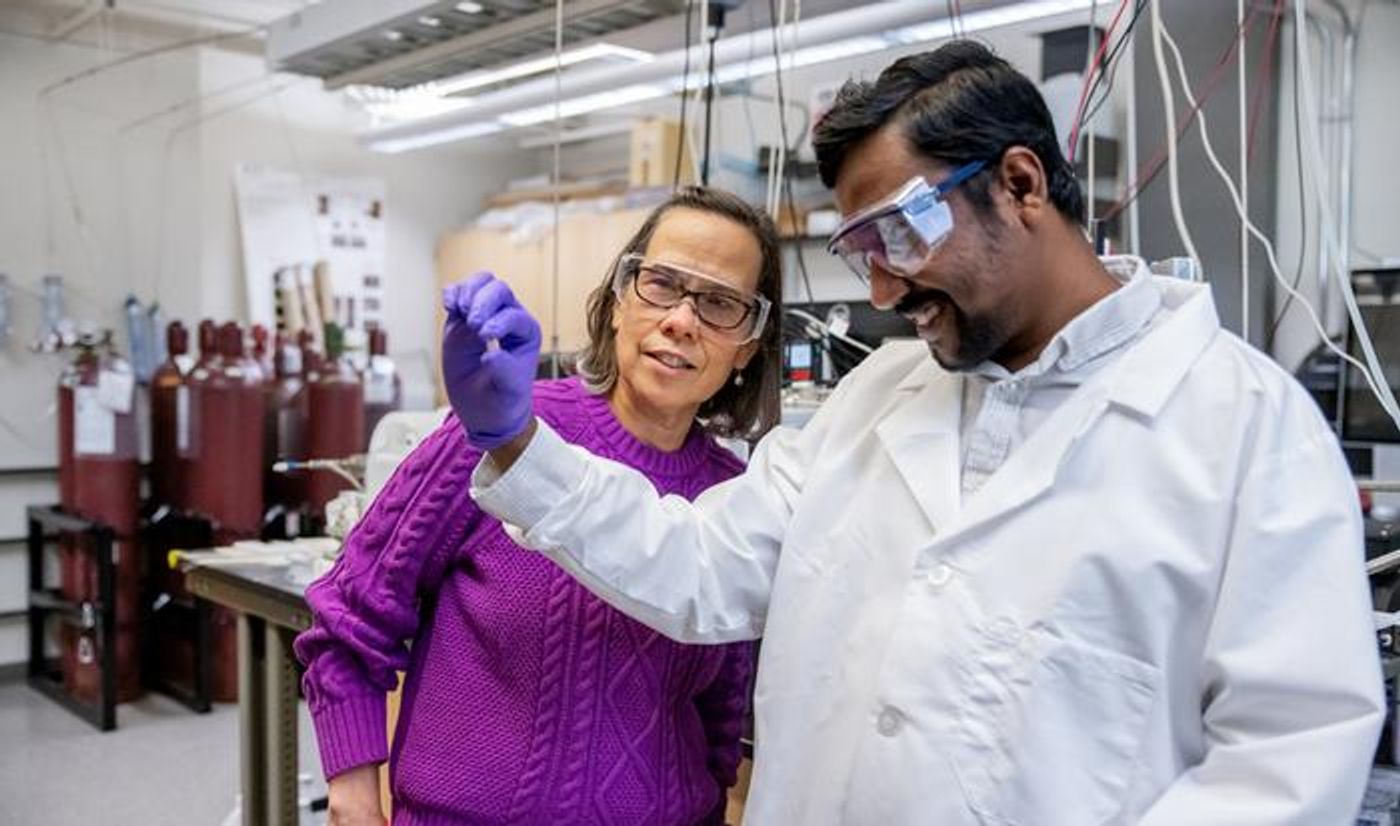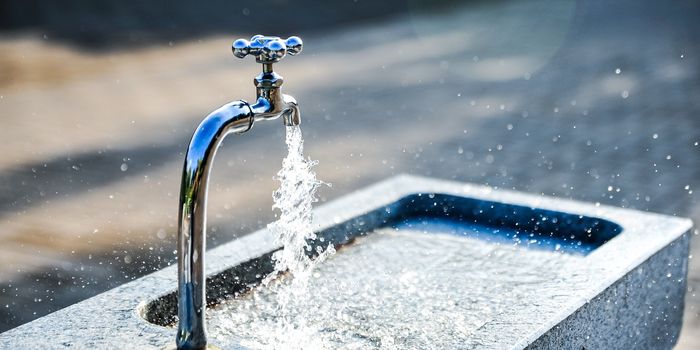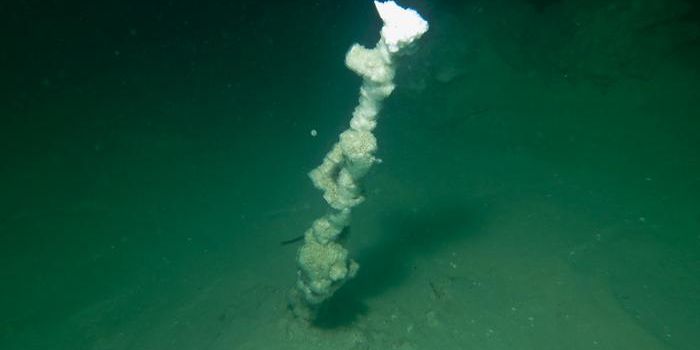Innovation at High Temperatures: A Multidisciplinary Approach to Advanced Materials
The Department of Defense (DoD) recently awarded a $6.25 million research grant to a collaborative research team from Arizona State University (ASU) and the University of Virginia (UVA) to investigate if Earth- and space-based rocks and minerals can potentially be used to develop future high-temperature materials. The project is being led by Dr. Elizabeth J. Opila, who is a Rolls-Royce Commonwealth Professor and chair of the Department of Materials Science and Engineering at UVA and holds the potential to gain better insight into the methods and components required to process high-temperature materials that goes beyond previous materials made by nature or even humans.
Dr. Elizabeth J. Opila and postdoctoral researcher, Dr. Sandamal Witharamage, examining a sample as part of a project funded by the Department of Defense to investigate how high-temperature materials can be produced. (Credit: University of Virginia School of Engineering and Applied Science)
“It’s a boom time for high-temperature materials because of needs in energy production, hypersonics and new things like additive manufacturing coming on in the field,” said Dr. Opila. “[People are] exploring new compositional spaces where you’re mixing different elements in different ways. On top of that we’re thinking about this geologically and planetary-inspired materials, which is lots of fun.”
Dr. Opila is a former Research Scientist at the NASA Glenn Research Center whose research focuses on materials being used in extreme environments, and members of her team will encompass a myriad of disciplines, including materials science, computational modeling, mineralogy, engineering, and geology, to name a few.
As part of the project, Dr. Opila says the teams will develop recipes for how high-temperature materials can be produced. As part of the collaboration, her lab at UVA will apply the heat factor while the ASU labs will apply the pressure factor.
The funding for this project comes as part of the DoD’s Multidisciplinary University Research Initiative (MURI), whose primary goal is to employ rare earth elements, which are 15 elements within the periodic table known as the Lanthanide series. Currently, rare earth elements are used in the aerospace industry and batteries, but it is quite expensive to excavate them from rock and soil for their use, and separating the rare earth elements from rock and soil is something Dr. Opila is addressing with her students.
How will this MURI project help contribute to high-temperature materials in the coming years and decades? Only time will tell, and this is why we science!
As always, keep doing science & keep looking up!
Sources: EurekAlert!, University of Virginia, Lynas Rare Earths









